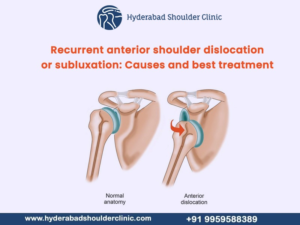Our shoulder plays a crucial role in our day to day life. Shoulder problems like shoulder instability, rotator cuff tear, shoulder separation, bone spurs, and ligament damage make daily tasks difficult, or even painful. Acute injuries resulted from an accident or while playing sports, or the effects of arthritis might also result in more severe forms of shoulder problems and discomfort.
What to do to eliminate this discomfort? Several treatment options are available to treat injured shoulders, and the surgical option is the last option. This is because the anatomy varies for every patient. Orthopaedic expert has developed many treatment options, tailored to treat your specific shoulder problems.
Here is the guide for the most common surgical treatment procedures that have proven successful; Arthroscopy and Open Surgery.
Arthroscopic Shoulder Surgery Vs Open Shoulder Surgery
Shoulder arthroscopy and open surgery both are popular surgical procedures. Arthroscopy is a relatively new procedure, whereas open surgery is a traditional procedure using a scalpel and sutures. However, both methods have their pros, cons, limitations, and appropriate uses that are different.

Shoulder Arthroscopy
Shoulder arthroscopy is a surgical procedure which is minimally invasive and being practised since the 1970s. The procedure involves visualizing, diagnosing, and treating various problems inside your shoulder joint and the space surrounding joint. Here in this procedure, 2 to 3 small incisions are made around your shoulder to insert specialized instruments.
An arthroscope with a small camera head is inserted through one of the incisions. The arthroscope also contains magnifying lenses and a small light source to project a clear image of your joint on the TV monitor. It allows your surgeon to view the defects inside your shoulder.
Some of the common shoulder arthroscopic procedures include:
- Rotator cuff repair
- Recurrent shoulder dislocation repair
- Repair of the labrum
- Ligament repair
- Inflamed tissue or loose cartilage removal
Nerve release, shoulder fracture repair, and cyst excision are less commonly repaired performing using an arthroscope.

Open Shoulder Surgery
Open surgery for shoulder still plays a substantial role in some specific shoulder problems. In some cases, open surgery can provide better results than arthroscopy. The procedure for open surgery involves in making a single large incision about 4 to 6 cm.
In cases of a large rotator cuff tear, shoulder replacement, acromioclavicular(AC) joint repairs, etc. open surgery is necessary for better results. Still, some surgeons prefer open surgical method in some cases because it provides better access to the damaged area being operated.
Postoperative Complications
Since arthroscopy is a minimally invasive procedure where smaller incisions are made during the surgery the chances of infections or other complications are very less. Whereas in open surgery, the risk of complications is more.
However, even the minimally invasive procedure has some risks factors which include possible infections and damage to the nerves surrounding and blood vessels. Some of the complications after surgery include.
- Fever
- Pain or swelling
- Tenderness and stiffness
- Infection
- Unusual bleeding
- Numbness or tingling of the arm or hand
The modern techniques and monitoring successfully minimized the occurrence of these complications.

Postoperative pain
You will experience less postoperative pain in case of arthroscopic surgery because there is no need to cut muscles or tendons to repair the joint. The mild discomfort you are experiencing is easily manageable.
In the case of open surgery, larger incisions are made during the procedure. So you may experience a little more pain after surgery for some days during the recovery time. However, some pain killers, NSAIDs are provided to manage pain.
Recovery
After shoulder arthroscopy, it might take several weeks to heal the joint and to recover completely. You might need to stay 1 to 2 hours in the recovery room and will be discharged on the day of surgery. You can perform your daily activities within a few days to weeks.
Open surgery involves making a larger incision compared to arthroscopy. It is advised to stay in the hospital for 1 or 2 nights for post-surgical recovery. It takes more time to recover compared to arthroscopic surgery.
However, recovery & rehabilitation is associated with the type of shoulder surgery performed and varies from person to person.

Rehabilitation
A rehabilitation program might be beneficial for a speedy recovery. Rehabilitation plays a dominant role to recover faster and get back to your daily activities. Some form of exercises will help you to regain strength and motion of your shoulder more quickly.
Generally, a surgeon will plan a rehabilitation based on the surgical procedures you have undergone. In case of complicated surgical repair, it is recommended to supervise your exercise program by a physical therapist.
Rehabilitation is very important phase so that if you make a stronger effort, you can recover faster.
Recurrence
Open surgical procedures for shoulder problems have a low recurrence rate but are associated with some complications, whereas arthroscopic procedures have a higher recurrence rate.
Surgical Scars
The arthroscopic procedure involves smaller incisions. So the scars are not visible in the surgical area. In the open surgical procedure, the incisions made are larger and requires sutures to close the cuts. So the scares are noticeable compared to the arthroscopic procedure.
Arthroscopic Shoulder Surgery and Open Shoulder Surgery has its own benefits and the ideal surgery that suits you will be decided by the doctor based on the severity of your shoulder problem. If you are facing any shoulder problem, consult Dr. Chandra Sekhar, one of the best shoulder surgeons in Hyderabad. A single consultation can find a solution for your shoulder problem irrespective of the complication.





